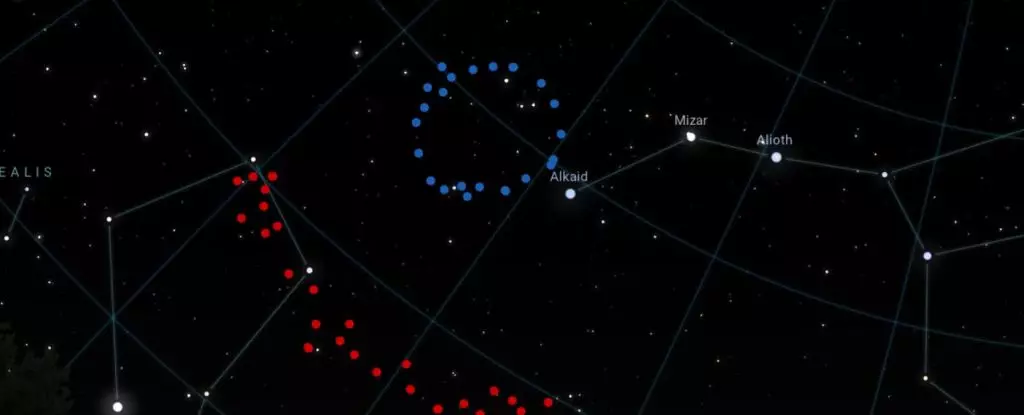In an astonishing revelation that challenges existing cosmological theories, astronomers have stumbled upon an immense structure in the distant universe, known as the Big Ring. This colossal formation, spanning approximately 1.3 billion light-years in diameter, is characterized by a remarkable, nearly perfect arrangement of galaxies. It took 6.9 billion years for the light from this structure to reach Earth, providing a glimpse into a long-forgotten era of cosmic evolution. The study, spearheaded by astronomer Alexia Lopez from the University of Central Lancashire, was presented at the 243rd American Astronomical Society meeting and published in the Journal of Cosmology and Astroparticle Physics, marking a pivotal moment in our understanding of the universe.
The Big Ring is not merely a footnote to the findings of the Giant Arc, its predecessor discovered by Lopez and her team in 2021; rather, it amplifies the conundrum posed by its fanciful formation. Both structures occupy the same region of the sky, eliciting inquiries about their origins and implications for cosmic evolution. Lopez candidly states, “Neither of these two ultra-large structures is easy to explain in our current understanding of the universe.” This surprise prompts us to reconsider fundamental premises about the distribution of matter across the cosmos.
One major aspect of the Big Ring’s discovery is its discordance with the Cosmological Principle, which posits that, at a large scale, matter should be uniformly distributed throughout the universe. However, the immense size of the Big Ring, surpassing the current theoretical limit of structures—set at 1.2 billion light-years—poses a substantial challenge to this principle. While the discovery of such a structure can be interpreted as a mere anomaly, its implications ripple through our understanding of cosmology and the very fabric of space-time.
The potential connection to a phenomenon known as Baryon Acoustic Oscillations (BAOs) has been considered in the context of this discovery. BAOs are spherical arrangements of galaxies, remnants of acoustic waves from the early universe that solidified as the fabric of space expanded. However, the Big Ring is distinct from BAOs, as its corkscrew-like structure deviates from the expected spherical formations. This peculiarity intertwines with a broader set of mysteries surrounding cosmic structures, further muddying the waters of cosmological studies.
The implications of the Big Ring necessitate reevaluation of established cosmological models. For instance, Roger Penrose’s theory of conformal cyclic cosmology envisions an endless series of Big Bang events, each producing recognizable patterns in the aftermath. However, while appealing, this model must contend with its own theoretical challenges. The reach of such models further indicates that our understanding of the universe requires substantial adaptation to accommodate these colossal structures.
Another fascinating proposition involves the concept of cosmic strings—hypothetical one-dimensional topological defects in space-time. According to these theories, cosmic strings could manifest as “wrinkles” that emerged during the early universe and have since frozen into their current forms. The implications of cosmic strings could reshape our understanding of structure formation within the universe, albeit with tangible evidence yet to be discovered.
Despite the uncertainties surrounding the Big Ring and its cosmic counterpart, the Giant Arc, these entities underscore the importance of continued astronomical exploration. The search for additional large-scale structures scattered throughout the cosmos could yield insights that illuminate our understanding of the Big Ring and the mysteries of galactic formation. Lopez highlights the odds against large structures, noting, “From current cosmological theories we didn’t think structures on this scale were possible. We could expect maybe one exceedingly large structure in all our observable Universe.”
The landscape of modern cosmology is marked by controversy, uncertainty, and the perennial quest for truth. The emergence of the Big Ring and its allied mysteries presents both a challenge and an opportunity for researchers. As we delve deeper into the cosmos, we must remain open to the possibility that our understanding of the universe—its past, present, and future—may be far more intricate than previously conceived. The pursuit of knowledge continuously reshapes our perceptions, inviting us to embrace the unknown and the startling realities of the universe that lie just beyond our reach.

